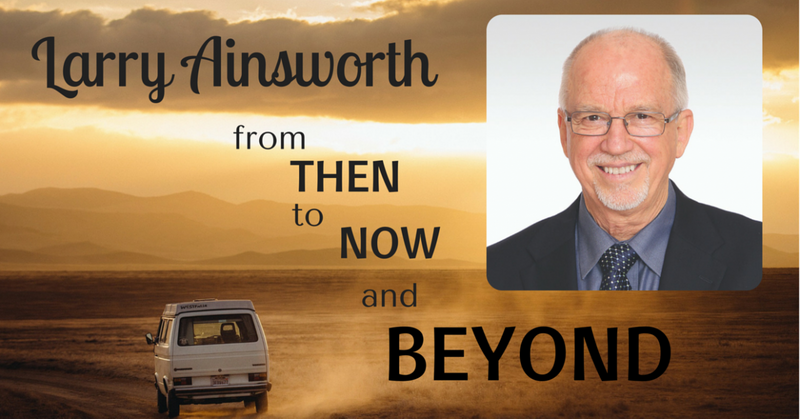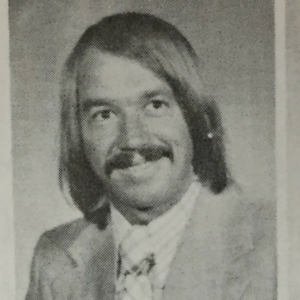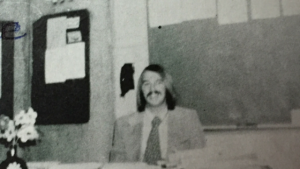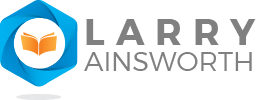Timeless Practices to Improve Student Learning
Supporting educators and leaders in their important work of helping every student become a confident and successful learner

LARRY AINSWORTH: FROM THEN TO NOW AND BEYOND

The Beginning
A native Californian, 22 years old, straight out of college with a minor in education, I wanted to teach! The year was 1970 and Chicago Public Schools was in need of teachers, so that’s where my orange VW bug took me. Having no student-teaching experience, and without any teaching credential, I was issued an emergency certificate on condition that I immediately enroll in teaching methods courses at Chicago State University. I was about to become a real teacher!
The inner-city K-8 school to which I was assigned was a three-story brick building built in the mid-to-late 1800s. An overcrowded neighborhood school with too few classrooms to house its 1000 students, the only viable solution was to split the school day for students in grades 4-8 into two four-hour shifts (K-3 attended the full day). So from 8:00 a.m. to 12:00 p.m., one teacher and students occupied the classroom but had to quickly exit at noon to enable the 12:00 to 4:00 p.m. teacher and students to use it for their four hours. Two teachers and their students sharing the same space, furniture, books, materials, and bulletin boards—orderly chaos on a daily basis! But this taught me one of the most critical skills every teacher needs to learn—flexibility! And I developed that skill while figuring out how to teach students who were well below their current grade level and desperately in need of more than four hours of education each day.
In the three years I taught in Chicago (two years in fifth grade and one year in eighth), I gained the equivalent of 25 years’ experience. I learned so much from students whose lives and culture were so different from my own. One of my greatest takeaways was that students do not judge you by the color of your skin, but by your behavior, attitude, and whether or not you genuinely care about them. I loved my students, and they knew it, not because I said so, but because of my actions that came from a sincere desire and motivation to help them learn—intensified by the challenging circumstances we were in.

The Middle
If there is truth to the adage, “teaching is a calling,” I felt that was certainly applicable to me. Teaching had become my life. In 1973 I returned to California after successfully interviewing for an eighth grade math position with the Franklin-McKinley School District in San Jose. Living in the nearby hills of Santa Cruz, I daily commuted from my home in the redwoods (still driving my faithful VW bug) to teach prep algebra to a diverse group of 150 students each day. There I learned another important lesson: If you’re effective as a teacher and relate well to your students, you are rewarded by receiving additional students! The school counselor often asked me if I’d be willing to take in “just one more” who was not having a successful year in the other eighth-grade math classroom at our school. I honestly considered it both a privilege and a challenge to see if I could help that student turn his or her life around—at least mathematically!
Big changes in my life happened (getting married for one), and other priorities took me into less-than-fulfilling jobs outside of education for a few years. But then I came gratefully back for two more decades in the classroom as an elementary and middle school teacher in demographically diverse settings in both California and Arizona. To continue growing professionally, I added an ESL certification to my credentials and took on adjunct school and district duties: mentor teacher, K-12 math committee co-chair, and teaching a before-school class to advanced students. During the 1990s, I co-authored my first book, Student-Generated Rubrics, based on a California Assessment Collaborative grant our school had received. This led to conference presentations and requests from schools outside my own district to share this fully engaging, student-centered process with their teachers. My author-consultant role had begun, and it brought me a fulfilling new dimension to my life in the classroom.
All I wanted to do was continue making a positive impact on students’ lives, but I felt unsure how to best do that—and I was getting restless for another change. Thinking that the next logical step was to become a school administrator, in 1999 I completed my M.S. degree in educational leadership and earned my California preliminary administrative credential. But I knew my heart wasn’t fully onboard with this career pathway.
About this time, a well-known educational thought leader said the following life-changing words to me one evening over dinner: “You know, you can make a real impact on hundreds of students directly by being a school administrator, but I want you to consider the impact you could make indirectly on thousands and thousands of students you will never meet by working with and through their teachers and leaders.” And that was the beginning of a fulfilling 16+ year career as an author-consultant that continues to this day.
The Now
In 2014-15 I authored Common Formative Assessments 2.0 for Corwin, created a companion volume professional workbook and eCourse, and certified twelve outstanding professional consultants to conduct CFA 2.0 workshops in districts all over North America. My focus now is in presenting CFA 2.0 keynotes at conference venues and in supporting my amazing team of consultants who are helping to extend the reach of this powerful process that shows teachers how they can intentionally align standards, instruction, assessment, curriculum, and data analysis within each unit of study.
The Beyond
Retirement! But before I go, I would like to create one or two more professional learning Corwin workshops to help classroom teachers, school leaders, and district leaders carry out their all-important work of helping their students grow and succeed—the culmination of 40+ years striving to directly impact the lives of my own students and to indirectly do the same for those thousands and thousands of students I will never get to meet. It’s been an amazing journey.




